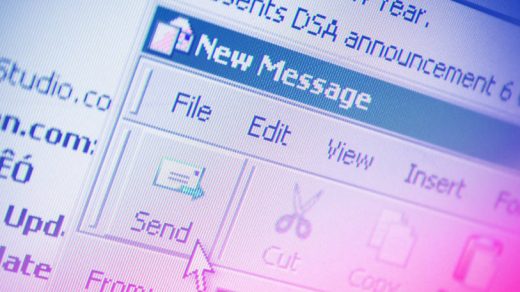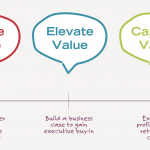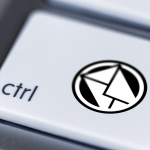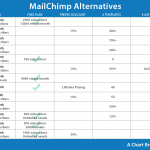I Work At HipChat, But These Are Four Times I Stick With Email (For Now)
I’ve built a career on building communication tools, first at Microsoft, then with my own startup, and now at the group messaging platform HipChat. I’ve also watched (and joined in myself) as users embrace Snapchat, Facebook Messenger, and FaceTime outside the workplace, similarly looking for more natural ways to connect.
That doesn’t surprise me. Email was created 35 years ago out of a need to send messages over the relatively new internet, but it’s never really felt like a natural way to communicate. It can turn a simple decision that would take five minutes to resolve in person into a weeklong exchange.
So why are we still using it? Everybody has their own answers, but as somebody who lives and breathes HipChat and believes email’s uses will continue to shrink, here are a few of the times I still rely on it.
1. For (Some) One-On-One Exchanges
I find that email can still work well for one-on-one exchanges, but when teams try to communicate on email threads, it can quickly get overwhelming.
I’ve seen this happen for a long time. For example, if I send out an email to a whole team asking if someone has time to answer a customer, everyone needs to think about whether everybody else saw it, and the only way to confirm this is to “reply all.” This forces every team member to keep up with the email chain until the task is finished, even if they haven’t had a hand in it (and didn’t need to). The cognitive burden in a case like this might seem small when it comes to just one email thread, but multiply it by thousands a week and it can consume all your time.
But I’ll occasionally revert to email to discuss a specific issue with just one other person. Cordoning off that conversation in my email inbox sometimes works just as well as trading direct messages in HipChat.
2. When It’s Okay To Wait
Team messaging apps are all about immediacy, and the more that becomes the new normal, the more email starts to feel like running with 20-pound weights strapped to your ankles. Expectations of response times have gone from a few hours to near real-time, allowing teams to work closer to the speed of thought. That’s useful especially at a time when teams are increasingly distributed and mobile. Common barriers to efficiency–like siloed email chains and individually owned documents–are easier to knock down with chat tools.
For instance, if my team is sorting through an issue together that’s too complex to solve through text-based conversation, any team member can click a button in HipChat to “escalate” the text chat to video–to talk through the issue just like we would if we were all in sitting in the same physical space, even if we’re not.
But when it’s okay to wait, email still comes in handy. Not every issue requires escalation, an immediate reply, or any face time at all. And in fact, as instantaneous responses come to be more often expected, email’s less-urgent pace can still be a bit of a reprieve.
3. As A Public Front Door
At Atlassian (HipChat’s parent company), we rarely use email to communicate internally. HipChat handles the bulk of our communication. But every employee still has an @Atlassian.com email address and uses it for very specific functions. One of the most obvious is as a public front door for people outside the organization to reach us.
Because the sender doesn’t see my presence or have any expectations about my availability, I can decide when and if I should respond. That can be helpful because it allows me to devote more attention to the real-time chats taking place among my team.
4. For Long-Form Communication
Chat platforms still aren’t that good (yet!) at long-form communication. For documents like a report that everyone on the team needs to receive and may want to file away for future reference, email can be a good option.
Still, even situations like this tend to run up against email’s limitations: The message is local and only available to the individual, updates need to be recommunicated, there can be version-control issues, and search can be inconsistent and difficult. So while we’ve switched to more collaborative tools at HipChat in order to jump over hurdles like these, other teams still rely on email to circulate long reports. And when there are fewer internal email messages overall to compete with, those otherwise cumbersome documents are less likely to get lost in the shuffle.
Coexisting, For Now
If you ask me, communications tools like HipChat are the future because they offer the kind of expressiveness we’re already gravitating toward in and outside the workplace. Especially for younger workers, increasingly dated tools like email feel like a step backward.You may as well hand them a landline phone and a big, heavy desktop PC.
In the meantime, though, email can still be useful. The more you start testing out a team chat tool, the more clearly defined your uses for email will become. This can help streamline and tame your team members’ otherwise unruly inboxes. And in the mid- to longer-term, whittling down your uses of email can help you figure out which other functions and workflows you can automate in a collaborative platform.
In other words, by using email to catch the runoff of things you haven’t yet moved over into chat, it can act like the training wheels your team needs to embrace a future with much less of it. This way, when email finally does recede into the background of your workflow (even if it never goes away completely), your team won’t have relied on it for a while already.
Oji Udezue is group product manager at HipChat.
Fast Company , Read Full Story
(46)














